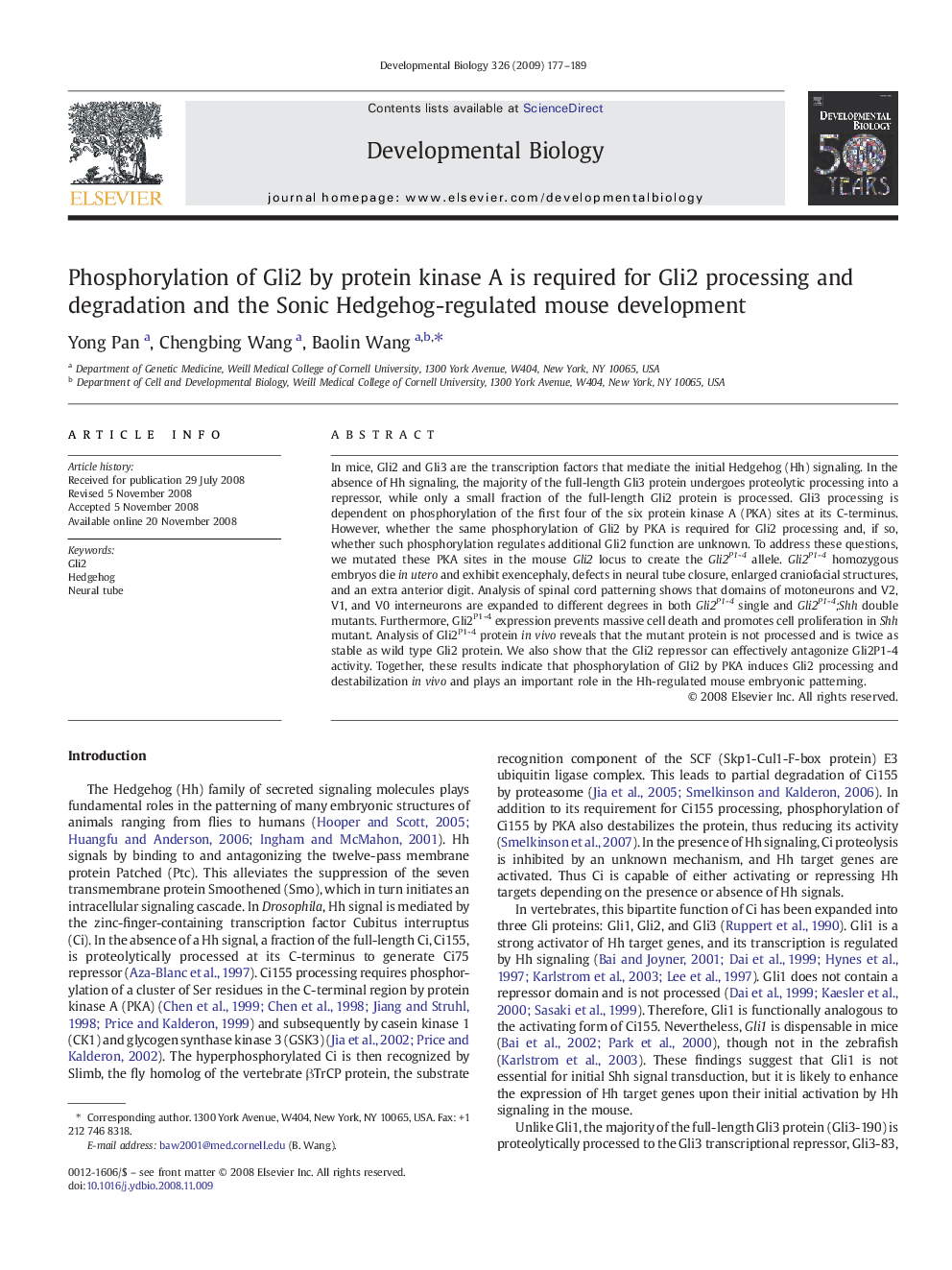| Article ID | Journal | Published Year | Pages | File Type |
|---|---|---|---|---|
| 10933545 | Developmental Biology | 2009 | 13 Pages |
Abstract
In mice, Gli2 and Gli3 are the transcription factors that mediate the initial Hedgehog (Hh) signaling. In the absence of Hh signaling, the majority of the full-length Gli3 protein undergoes proteolytic processing into a repressor, while only a small fraction of the full-length Gli2 protein is processed. Gli3 processing is dependent on phosphorylation of the first four of the six protein kinase A (PKA) sites at its C-terminus. However, whether the same phosphorylation of Gli2 by PKA is required for Gli2 processing and, if so, whether such phosphorylation regulates additional Gli2 function are unknown. To address these questions, we mutated these PKA sites in the mouse Gli2 locus to create the Gli2P1-4 allele. Gli2P1-4 homozygous embryos die in utero and exhibit exencephaly, defects in neural tube closure, enlarged craniofacial structures, and an extra anterior digit. Analysis of spinal cord patterning shows that domains of motoneurons and V2, V1, and V0 interneurons are expanded to different degrees in both Gli2P1-4 single and Gli2P1-4;Shh double mutants. Furthermore, Gli2P1-4 expression prevents massive cell death and promotes cell proliferation in Shh mutant. Analysis of Gli2P1-4 protein in vivo reveals that the mutant protein is not processed and is twice as stable as wild type Gli2 protein. We also show that the Gli2 repressor can effectively antagonize Gli2P1-4 activity. Together, these results indicate that phosphorylation of Gli2 by PKA induces Gli2 processing and destabilization in vivo and plays an important role in the Hh-regulated mouse embryonic patterning.
Keywords
Related Topics
Life Sciences
Biochemistry, Genetics and Molecular Biology
Cell Biology
Authors
Yong Pan, Chengbing Wang, Baolin Wang,
